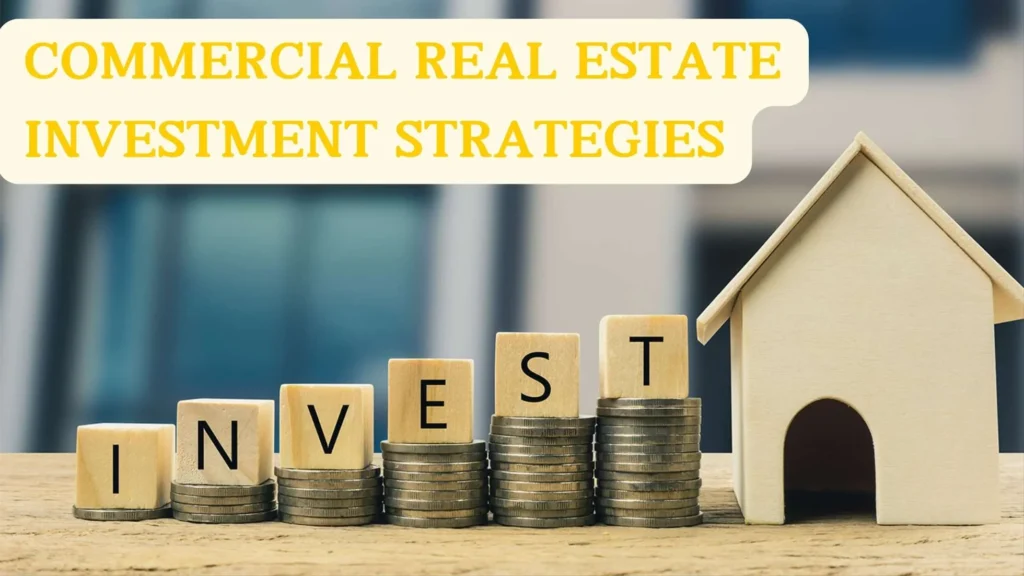
In the vast landscape of investment opportunities, commercial real estate stands out as a particularly diverse and dynamic field. With its broad spectrum of asset types, property classes, and geographical locations, this sector offers a wealth of strategies for investors aiming to build wealth. Whether you’re drawn to the allure of high-rise office buildings, the steady income of retail spaces, or the transformative potential of undeveloped land, understanding the nuances of commercial real estate investment is crucial. The key to success lies not just in recognizing the potential in a piece of property but in applying the right investment strategy to unlock that potential. This article delves into three of the best strategies for commercial real estate investment: the BRRRR method, land banking, and long-term buy and hold, providing a roadmap for investors to navigate this complex but rewarding terrain.
The Commercial BRRRR Method
Explanation of the BRRRR Acronym: Buy, Rehab, Rent, Refinance, Repeat
The BRRRR method, a strategy made famous by the real estate community BiggerPockets, stands as a cornerstone for many successful commercial real estate investors. This acronym—Buy, Rehab, Rent, Refinance, Repeat—outlines a cyclical process designed to maximize an investor’s return on investment by leveraging the value-added to a property through rehabilitation.
Detailed Steps Involved in the BRRRR Strategy
Finding Undervalued Properties
The journey begins with the acquisition of an undervalued property, often one in a distressed seller situation or requiring significant improvement. The goal is to purchase these properties well below their replacement costs, setting the stage for substantial value addition through rehabilitation.
Renovating to Increase Tenant Appeal
Following acquisition, the property undergoes renovation, not merely to meet the comps but to enhance its appeal to tenants. This phase may include updates like interior and exterior painting, new flooring, refreshed signage and directories, and upgraded lighting. These improvements aim to rejuvenate the property, making it more attractive and functional for tenants.
Renting the Renovated Space
With the property now boasting a facelift, the next step is to lease it out. This stage might require the expertise of leasing brokerages or property management companies, especially for investors without a background in commercial leasing. The faster a property is leased, the quicker the investor can proceed to the next phase.
Refinancing to Recover Initial Capital
Refinancing represents the pivotal moment where the investor can pull the initial capital out of the investment, thanks to the increased value and cash flow generated by the property. Successfully executing the previous steps allows for refinancing based on a more favorable cap rate, effectively freeing up the investor’s capital while maintaining ownership of the now income-generating property.
Repeating the Process for Portfolio Growth
With capital in hand and a strengthened balance sheet, the investor is ready to repeat the process, scaling their commercial real estate portfolio. This repetitive cycle allows for the continuous growth of an investor’s assets, compounding wealth over time.
Land Banking
Introduction to Land Banking as a Patient, Hands-Off Investment Approach
Land banking emerges as a unique strategy within the commercial real estate investment realm, appealing to those with a more patient and passive investment stance. This approach involves purchasing land in the path of potential development, holding onto it with minimal involvement, and waiting for its value to appreciate over time.
Key Considerations in Land Banking
Selecting Land in the Path of Development
The essence of successful land banking lies in the strategic selection of land parcels poised for future development. Investors must keenly analyze factors such as location, zoning, topography, utilities, traffic, and demographics to identify land with appreciating potential.
Understanding Zoning and Planning
A deep understanding of local zoning laws and planning initiatives is critical for land bankers. This knowledge allows investors to anticipate changes in land use and development patterns, positioning their investments to benefit from future urban and commercial expansion.
Deciding on Financing Options
Investors in land banking face a crucial decision: to finance their purchase or to pay in cash. The choice between leveraging debt and utilizing all-cash depends on the investor’s risk tolerance and the specific characteristics of the land investment. Financing can enhance buying power but introduces additional obligations, while all-cash purchases eliminate debt service costs but may limit the investor’s liquidity.
Maintenance and Future Planning for the Land
Even as a hands-off investment, land banking requires some level of maintenance to preserve the land’s appeal and value. This might involve basic upkeep such as mowing, trash removal, and securing the property. Additionally, forward-looking investors might develop proposed plans for the site, enhancing its attractiveness to future developers or buyers by showcasing its potential.
In the world of commercial real estate investment, strategies like the BRRRR method and land banking offer pathways to wealth creation, each with its unique approach and set of considerations. By understanding and applying these strategies effectively, investors can navigate the complex landscape of commercial real estate with confidence, achieving their financial goals through informed and strategic decision-making.
Development as a High-Risk, High-Reward Strategy
Embarking on a commercial real estate development project is akin to navigating a high seas adventure—fraught with risk but promising immense reward. This pathway demands more than just capital; it requires vision, expertise, and the nerve to see through the uncertainties of transforming raw land into lucrative commercial spaces. Developers play the pivotal role of creators, envisioning and bringing to life projects that range from multifamily dwellings to sprawling commercial complexes, all while balancing the tightrope of financial viability and market demand.
Key Steps in the Development Process
Site Selection Based on Various Factors
The foundation of any successful development project lies in choosing the right site. This decision is influenced by a myriad of factors including location, zoning regulations, local demographics, and the accessibility of utilities. A prime location not only adheres to current zoning laws but also aligns with future urban planning initiatives, ensuring the project’s long-term relevance and success.
Collaboration with Experts for Planning and Design
The complexity of commercial development necessitates assembling a team of experts—architects, civil engineers, urban planners, and legal advisors—to navigate the project from concept to completion. This collaborative effort ensures that the vision for the development is both architecturally sound and commercially viable, taking into account the latest design trends and regulatory requirements.
Securing Financing and Managing Construction
Financing a development project is a significant hurdle, requiring a detailed presentation of the project’s potential to skeptical lenders. A developer’s track record, the strength of the professional team, and a solid financial plan are crucial for securing the necessary funds. Once financing is in place, managing the construction process becomes the next critical phase, with a focus on adhering to timelines, budget constraints, and quality standards.
Marketing and Completion Strategies for Success
As construction progresses, a strategic marketing plan is essential to attract tenants or buyers. This involves identifying the target market, crafting a compelling value proposition, and effectively communicating the unique benefits of the development. Successful completion and marketing of the project not only fulfill the developer’s vision but also contribute to the community’s growth and prosperity.
Long-Term Buy and Hold
Long-Term Buy and Hold Strategy’s Versatility
The long-term buy and hold strategy stands as a testament to the timeless adage of patience being a virtue. This approach is characterized by its versatility, allowing investors to capitalize on the gradual appreciation of property value while generating steady rental income. Whether it’s a high-grade office space or a retail strip mall, the essence of this strategy lies in its simplicity—buy an asset and hold onto it, reaping the rewards over time.
Factors to Consider When Choosing a Property for This Strategy
Type of Property and Investor Involvement
Investors must carefully consider the type of property that aligns with their level of desired involvement. Active investors might lean towards properties requiring hands-on management, while passive investors may prefer single-tenant properties with long-term leases.
Risk Tolerance and Investment Goals
The investor’s risk tolerance and long-term financial goals play a pivotal role in selecting the right property. While some may seek the stability of well-located, Class A buildings, others might chase higher returns through value-add opportunities in less established locations.
Underwriting the Investment for Cash Flow
Critical to the long-term buy and hold strategy is the thorough underwriting of the property, focusing on cash flow analysis, tenant creditworthiness, and the stability of rental income. This financial due diligence helps in forecasting the property’s financial performance and ensuring a steady stream of income.
Management of Ongoing Operations
Effective property management is crucial for maintaining asset value and tenant satisfaction. This involves everything from routine maintenance to strategic lease management, aimed at minimizing vacancies and optimizing operational efficiency.
Owner-Occupied Investments
Overview of Using Commercial Real Estate for One’s Own Business
Owner-occupied investments offer a unique blend of operational utility and investment growth, allowing business owners to anchor their operations within an asset they own. This strategy not only provides a home for the business but also creates an opportunity for asset appreciation and income diversification through leasing part of the space.
Advantages of Owner-Occupied Properties
Potential for Additional Rental Income
By leasing out unused portions of the property, owner-occupiers can generate additional income, helping to offset mortgage payments and operational costs.
Favorable Financing Terms Due to Reduced Lender Risk
Lenders often view owner-occupied properties as lower risk, resulting in more attractive financing terms, including lower interest rates and down payment requirements. This financial advantage enhances the property’s affordability and investment appeal.
Criteria for Owner-Occupied Financing
Financing for owner-occupied properties typically requires the business to occupy a significant portion of the building, ensuring the owner’s vested interest in the property’s maintenance and success.
Conclusion
The landscape of commercial real estate investment is rich with opportunities, each strategy offering a unique path to wealth creation. From the hands-on approach of the BRRRR method and the visionary world of development, to the patient waiting game of land banking, the steady journey of long-term hold, and the dual benefits of owner-occupied investments, the diversity of strategies caters to a broad spectrum of investor goals and risk tolerances. As you navigate this complex investment terrain, let your objectives, resources, and appetite for risk guide your strategy selection, ensuring a journey that is not only financially rewarding but also aligned with your vision for the future

